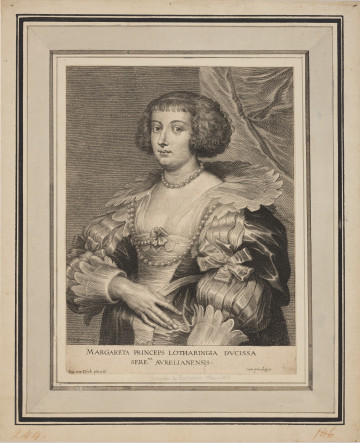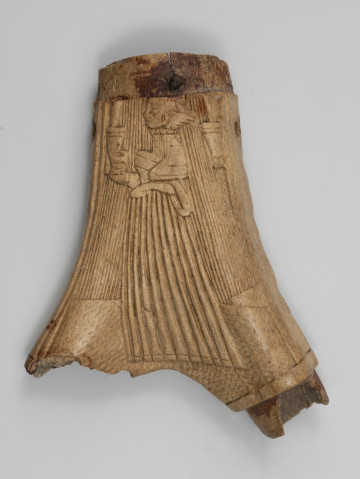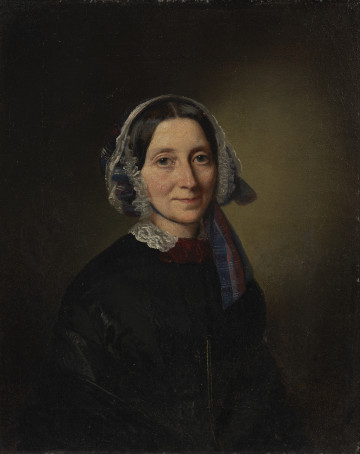
Margareta Princeps Lotharingia ducissa sere.ma Aurelianensis | Margaret, Princess of Lotharingia, Duchess of Orleans
circa 1632 — 1640
National Museum in Szczecin
Part of the collection: Italian graphics
A copperplate engraving by Antonio Ricciani (1775 -1836 or 1847), produced between 1805 and 1814, depicts Saint Mary Magdalene in a waist-up close-up, standing against a dark background, in a view known as a counter-rotation. She is turned to the right, but her head is turned to the left. A young woman in the costume, hairstyle and make-up of a wealthy Florentine lady possessing delicate features is shown modestly lowering her gaze downwards. Beneath the voluminous three-quarter sleeve of her loose gown, finished with a tight cuff, she reveals a long sleeve of white shirt. A large trapezoidal neckline, trimmed with haberdashery and adorned with a brooch of pearls, exposes smooth skin. A cloak supported on the forearm descends from Magdalena's left shoulder. The hair is tucked under a plain checkered headpiece and falls along the temples to the back in finely trefoiled strands. The headpiece is decorated above the forehead with a string of cameo pearls. The saint holds a turned ivory goblet with lid in her strongly elongated, slender hand. The oil vessel, offset to the right, forms a counterbalance to the figure's head; by way of meaning, it is an attribute of St Mary Magdalene. The work was dedicated to Carlo Giovanni Maria Alquier (1752-1826), French ambassador to the Kingdom of Italy, who was awarded the Commander's Cross of the Order of the Legion of Honour. This print was originally based on a painting by Leonardo da Vinci (1452-1519) at the seat of the Aldobrandini family, mentioned in one of the engraving's captions. The supporting drawing was made by Giovanni Battista Borani (active between 1810 and 1840). However, it is Ricciani's craftsmanship that makes the engraving superbly reflect Leonardo's typically idealised, subtly hued features of the female face and hands. Antonio Ricciani, a reproductive engraver and draughtsman, trained and worked in Rome. He produced prints mainly on mythological and religious subjects, along with historical ones, based on the depictions of ancient and contemporary masters. In 1812 he became a member of the Roman Academy of St Luke (Accademia Nazionale di San Luca), which was still considered the best academy of fine arts in Europe in the 19th century. Ewa Gwiazdowska
Author / creator
Object type
graphic
Technique
copper engraving
Material
Velin laid paper
Origin / acquisition method
acquisition
Creation time / dating
Creation / finding place
Owner
Muzeum Narodowe w Szczecinie
Identification number
Location / status

circa 1632 — 1640
National Museum in Szczecin

1501 — 1600
National Museum in Szczecin

1852
National Museum in Szczecin
DISCOVER this TOPIC
Museum of King Jan III's Palace at Wilanów
DISCOVER this PATH
Educational path